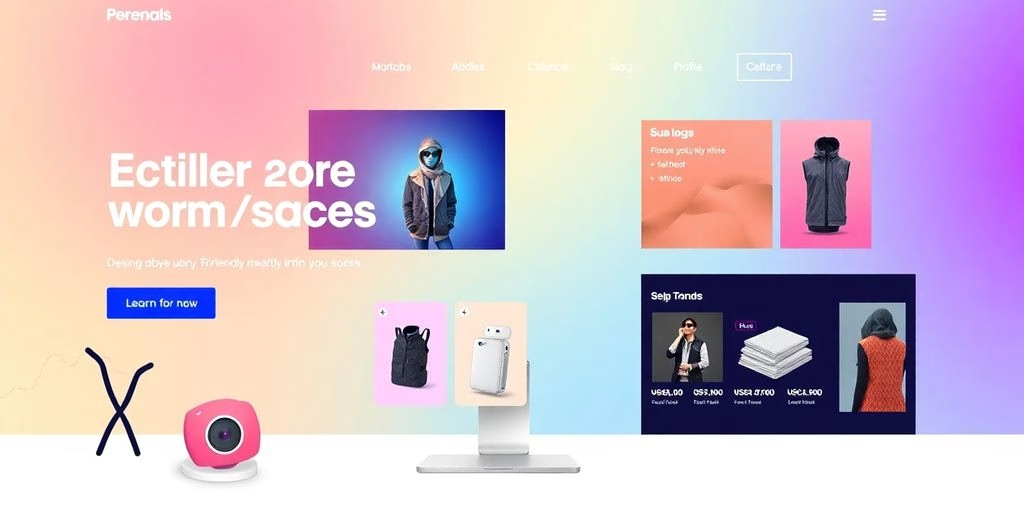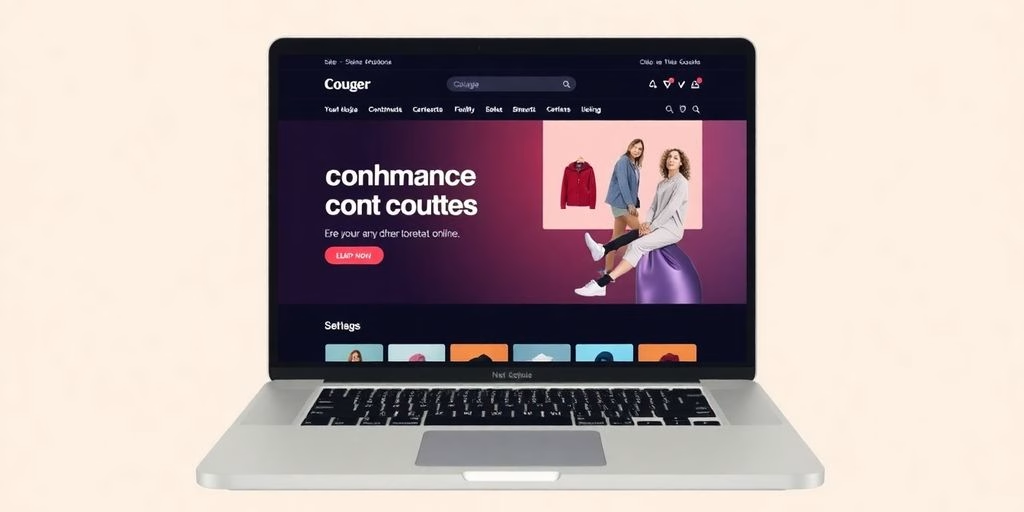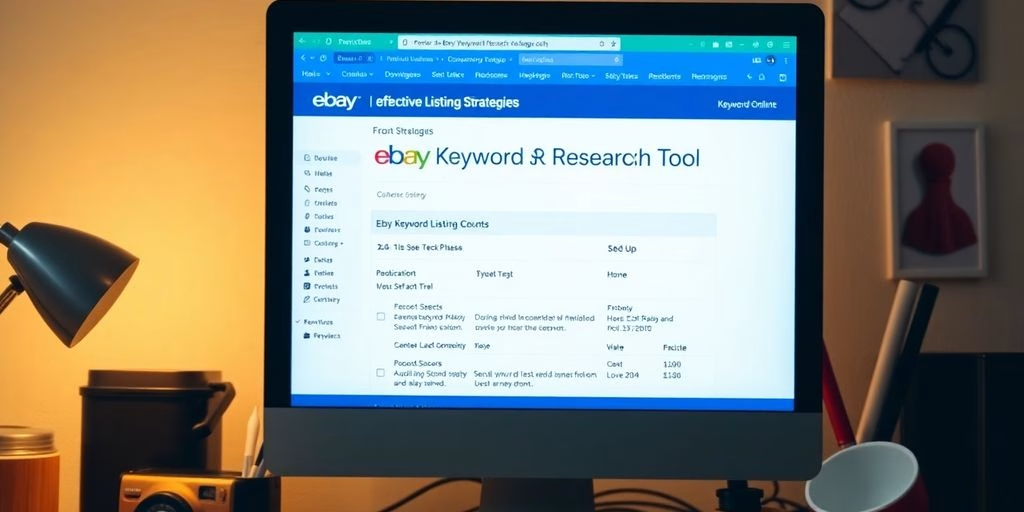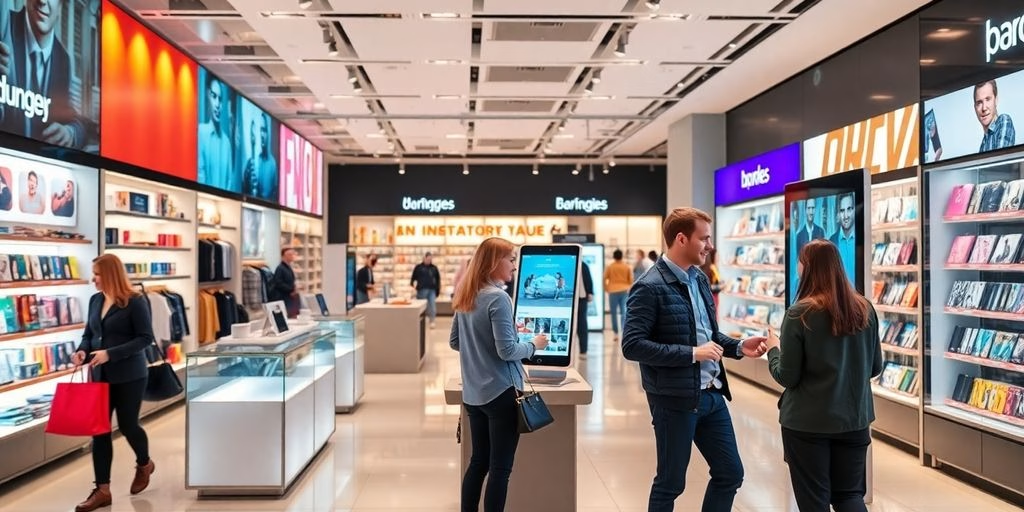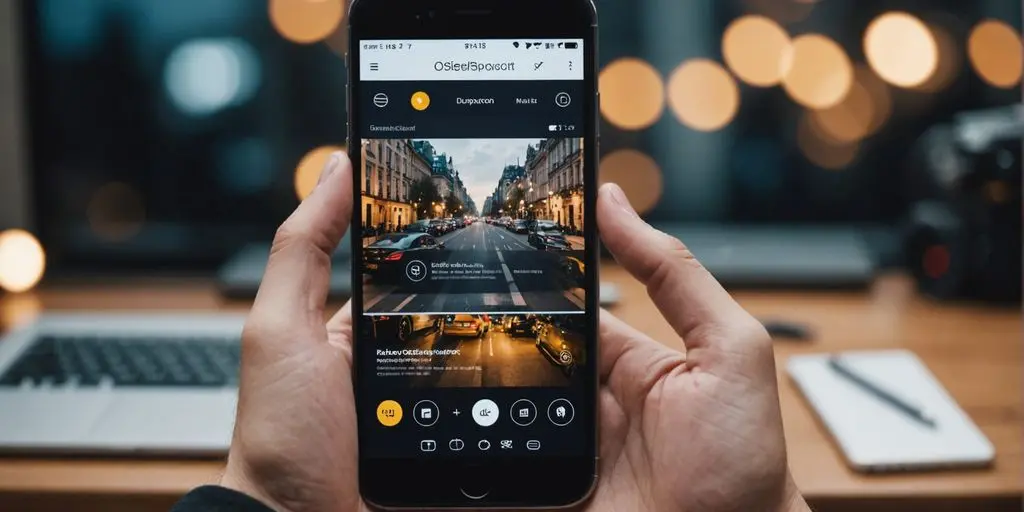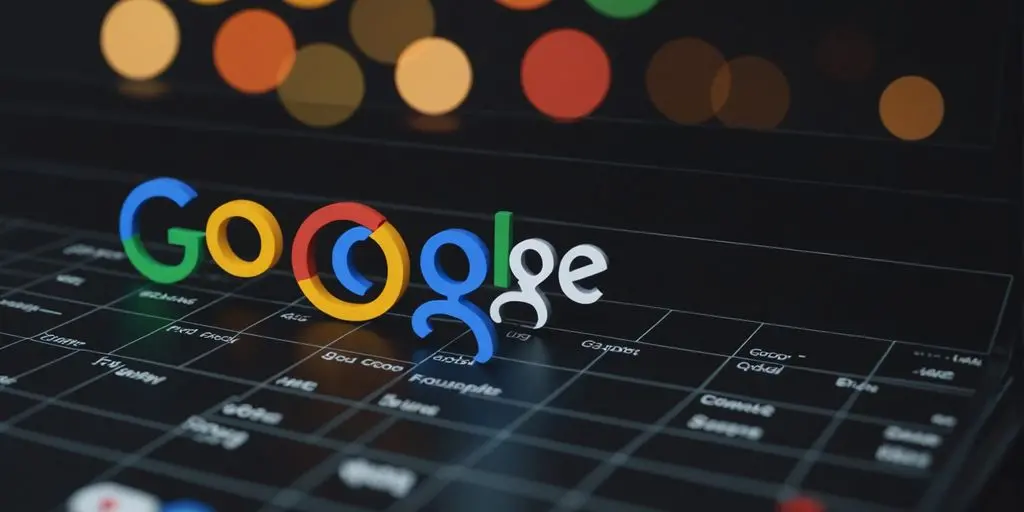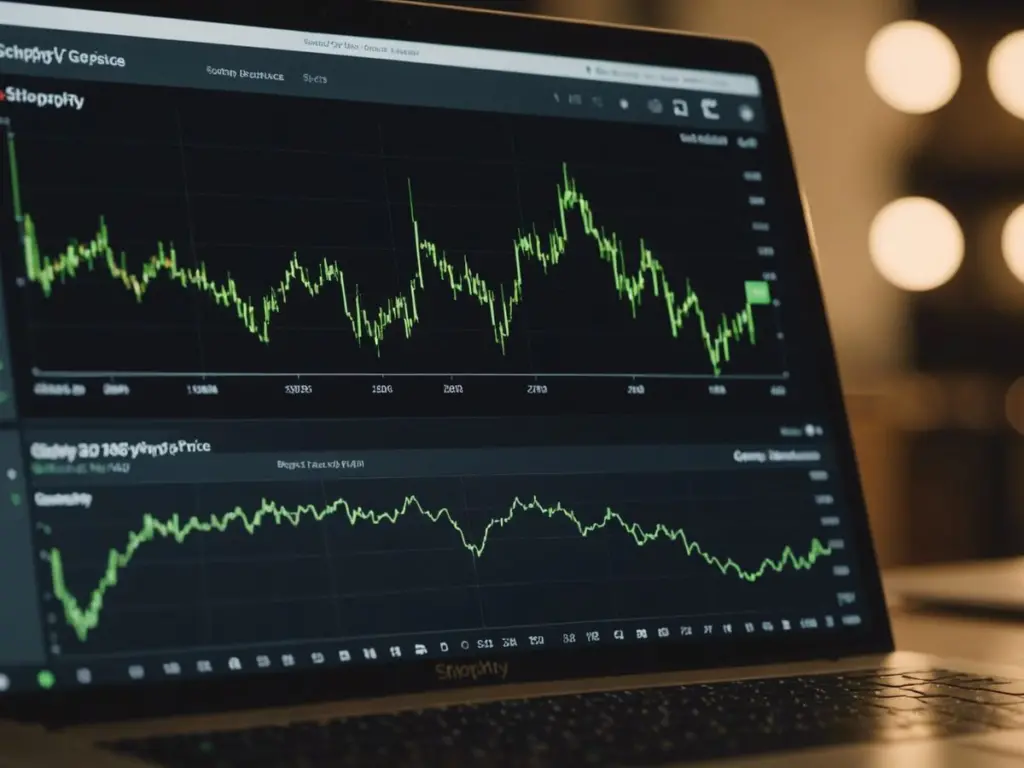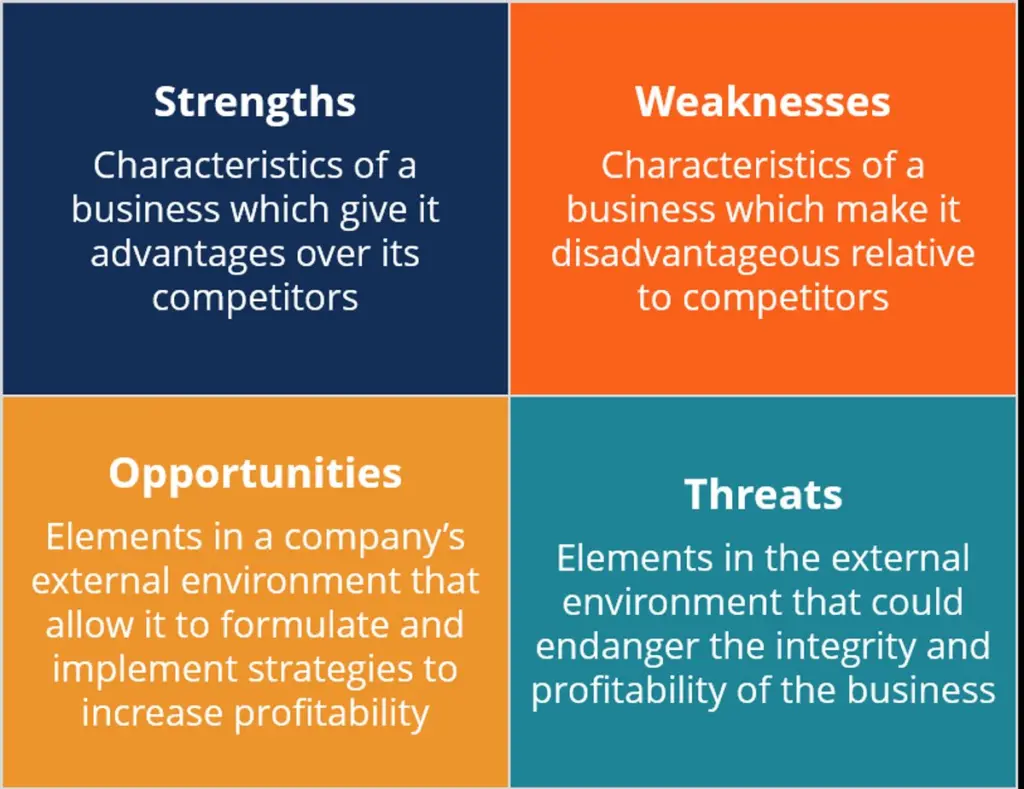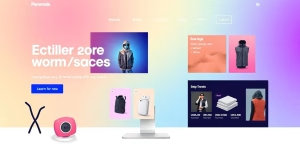As we step into 2025, the landscape of website ecommerce design continues to evolve at a rapid pace. To thrive in this competitive environment, businesses must focus on creating user-friendly, visually appealing, and technologically advanced online stores. This article will explore essential strategies that can help you master ecommerce design, ensuring not only a seamless shopping experience for your customers but also increased conversions and brand loyalty.
Table of Contents
ToggleKey Takeaways
- User-centred design is vital for improving customer satisfaction and retention.
- Consistency in design across all devices enhances user trust and brand recognition.
- Integrating AI and AR can significantly boost user engagement and sales.
- Streamlined navigation and checkout processes are crucial for reducing cart abandonment rates.
- Staying updated with future trends like voice commerce and sustainable design will keep your ecommerce site competitive.
Fundamental Principles of Website Ecommerce Design

When setting up an online shop, it’s easy to get caught up in fancy features and forget the basics. But honestly, nailing the core principles is what separates a successful site from one that’s just… there. Focusing on these fundamentals will set you up for long-term success.
User-Centred Design
Think about it: who’s actually using your site? It’s not about what you like, it’s about what your customers need. That means understanding their preferences, pain points, and what makes them tick.
- Conduct user research.
- Create user personas.
- Map out customer journeys.
By putting the user first, you’re more likely to create a site that people actually enjoy using, and that boosts conversion rates. It’s a win-win.
Consistency Across Platforms
Imagine walking into a shop where the layout changes every time you visit. Annoying, right? Same goes for your website. Whether someone’s on a desktop, tablet, or phone, the experience should be consistent.
- Use a responsive design.
- Maintain a consistent brand identity.
- Ensure navigation is the same across all devices.
Consistency builds trust. If your site looks and feels the same no matter where someone accesses it, they’re more likely to stick around and make a purchase. Plus, it just looks more professional.
A/B Testing and Iterative Design
Don’t just set it and forget it. The best websites are constantly evolving. A/B testing lets you try out different versions of a page to see what performs best. Maybe a different button colour increases clicks, or a new headline grabs more attention.
- Test different design elements.
- Analyse user behaviour.
- Make data-driven decisions.
By continually testing and refining, you can improve your website’s performance over time. It’s all about making small changes that add up to big results.
Enhancing User Experience Through Visual Design
Visual design is more than just making things look pretty; it’s about crafting an experience that guides users and makes them want to stick around. Think of it as the silent salesperson, working 24/7 to convince visitors that your site is worth their time and money. It’s about creating an intuitive and engaging environment.
Importance of High-Quality Imagery
Let’s be honest, blurry or low-resolution images scream ‘unprofessional’. High-quality images are essential for showcasing your products and building trust. People want to see what they’re buying, and they want to see it in detail. It’s not just about aesthetics; it’s about providing information and reassurance. Think about using 360-degree views or zoom functions to really let customers get a feel for the product. This is especially important for products like clothing or furniture, where texture and detail matter. Good images can also help to reduce returns, as customers have a clearer idea of what to expect. Make sure your images are optimised for web use, though – nobody wants to wait an age for a picture to load. You can build your online store with high quality images to attract more customers.
Colour Theory and User Behaviour
Colours aren’t just colours; they’re emotional triggers. Different colours evoke different feelings, and understanding this can be a powerful tool. For example, blue often conveys trust and security, while red can create a sense of urgency. Think carefully about your target audience and the message you want to send. A playful, vibrant colour scheme might work well for a children’s clothing store, but it would probably be a disaster for a financial services website. It’s also important to consider cultural differences – colours can have different meanings in different parts of the world. A/B testing different colour schemes can be a great way to see what resonates best with your audience. You can customise your store with the right colour to attract more customers.
Typography and Readability
Ever landed on a website where the text is so small or the font so fancy that you can barely read it? It’s incredibly frustrating, right? Typography is about more than just choosing a nice-looking font; it’s about making your content accessible and easy to read. Choose fonts that are clear and legible, and pay attention to things like font size, line height, and contrast. A good rule of thumb is to use a maximum of three different fonts on your website – any more than that and it can start to look cluttered and unprofessional. Also, think about using headings and subheadings to break up large blocks of text and make it easier for users to scan the page. Remember, people are busy, and they want to find the information they need quickly and easily. You can persuade design techniques with the right typography to attract more customers.
Visual design is not just about aesthetics; it’s about creating a user-friendly and engaging experience that drives conversions. By paying attention to things like imagery, colour theory, and typography, you can create a website that not only looks great but also helps you achieve your business goals.
Integrating Technology for Improved Ecommerce Functionality
Right, let’s talk tech. It’s not just about having a website anymore; it’s about making that website work for you, and more importantly, for your customers. We’re talking about tech that actually makes a difference, not just shiny bells and whistles. Think about how technology can streamline processes, personalise experiences, and ultimately, boost those conversion rates. It’s a pretty big deal.
Artificial Intelligence in Personalisation
AI is changing the game, no doubt. It’s not just about recommending products anymore; it’s about understanding customer behaviour on a deeper level. AI can analyse browsing history, purchase patterns, and even real-time interactions to offer a truly personalised shopping experience. Imagine a website that adapts to each individual visitor, showing them exactly what they want before they even know they want it. That’s the power of AI. It can also help with things like dynamic pricing and fraud detection, making your life easier behind the scenes. Consider how AI-driven personalization improves customer experiences.
Augmented Reality Applications
AR is still a bit of a novelty, but it’s starting to find its feet in ecommerce. Imagine being able to ‘try on’ clothes or ‘place’ furniture in your home before you buy it. That’s AR in action. It’s all about bridging the gap between the online and offline shopping experiences. While it might seem like a gimmick, AR can actually increase customer confidence and reduce return rates. Plus, it’s a great way to stand out from the crowd. It’s worth exploring how augmented reality applications enhance online shopping.
Mobile-First Design Strategies
If your website isn’t mobile-friendly, you’re basically invisible to a huge chunk of potential customers. People are shopping on their phones more than ever, so a mobile-first approach is no longer optional – it’s essential. This means designing for mobile devices first, then scaling up to larger screens. It’s not just about making your website responsive; it’s about creating a seamless and intuitive experience on mobile. Think about things like touch-friendly navigation, fast loading times, and simplified checkout processes. Don’t forget to integrate social media for opening an online store.
Mobile-first isn’t just a design trend; it’s a business imperative. If your site isn’t easy to use on a phone, you’re losing sales, plain and simple. Make sure your mobile experience is top-notch, and you’ll see the benefits. It’s an investment that pays off.
Strategies for Effective Ecommerce Navigation

Alright, let’s talk about making it easy for people to find what they want on your website. It’s not rocket science, but it’s super important. If folks can’t easily get around, they’re gonna bounce, and nobody wants that. We need to think about how people actually use websites and make sure our design helps them, not hinders them.
Streamlined Checkout Processes
The checkout process is where the magic happens (or doesn’t). A clunky checkout is a conversion killer. Think about it: someone’s finally decided to buy something, and then they’re faced with a million forms and confusing steps? No thanks. Keep it simple. Reduce the number of steps, offer guest checkout, and make sure the payment options are clear. I mean, 70% of shopping carts are abandoned during checkout, so it’s worth getting right. A streamlined checkout process can increase conversion rates significantly. Don’t make people jump through hoops to give you their money.
Intuitive Menu Structures
Menus are your website’s roadmap. They need to be clear, concise, and easy to understand. No one wants to play hide-and-seek with your products. Use clear category names, avoid jargon, and make sure the menu is visible on every page. Consider using a mega-menu if you have a lot of products, but don’t overdo it. Keep it organised. Think about how users naturally browse and structure your menu accordingly. A good menu helps people find what they’re looking for quickly and easily. Also, make sure your menu is consistent across all devices. A user-friendly online ordering system is key.
Search Functionality Enhancements
Sometimes, people know exactly what they want. That’s where a good search function comes in. Make sure your search bar is prominent and easy to find. Implement features like auto-suggest and typo correction to help people find what they’re looking for, even if they misspell it. Consider adding philtres and sorting options to help people narrow down their search results. The search function should be fast and accurate. It’s a direct line to your products, so make it a good one. Don’t forget to track what people are searching for, it can give you valuable insights into what they want and what you might be missing. You can also use predictive analytics to enhance eCommerce navigation.
The Role of Branding in Ecommerce Success

Branding in ecommerce? It’s not just a logo; it’s the whole shebang. It’s how customers perceive you, what they tell their mates, and whether they’ll bother coming back. A strong brand builds trust, loyalty, and ultimately, boosts sales. Think of it as the personality of your shop, but online. And in 2025, with everyone and their dog selling stuff online, standing out is more important than ever. Let’s get into the nitty-gritty.
Creating a Cohesive Brand Identity
Right, so what’s a cohesive brand identity? It’s all about making sure your brand is singing from the same hymn sheet across every platform. Your logo, colours, fonts, and tone of voice should all be consistent. This isn’t just about looking pretty; it’s about building recognition. When someone sees your stuff, they should instantly know it’s you. Think about it: a consistent brand presentation can increase revenue. It’s about creating a memorable and trustworthy image. This is where you start to build brand recognition.
Leveraging Social Proof
Social proof is basically online word-of-mouth. Think reviews, testimonials, and case studies. People trust other people more than they trust companies, so showing off positive feedback can be a game-changer.
Here’s a few ways to use it:
- Display customer reviews prominently on product pages.
- Share customer testimonials on your homepage.
- Use social media to showcase user-generated content.
It’s about showing potential customers that others have had a good experience with you. This is especially important in ecommerce, where people can’t physically see or touch the product before buying. A good way to get started is to look at your ecommerce marketing strategy.
Building Customer Trust Through Design
Design isn’t just about aesthetics; it’s about building trust. A dodgy-looking website screams ‘scam’, while a professional, well-designed site reassures customers that you’re legit. Good design includes clear navigation, high-quality images, and secure checkout processes. If your site looks like it was built in 1995, people aren’t going to trust you with their credit card details. It’s that simple. Make sure you have a good ecommerce UX.
Think of your website as your shop front. You wouldn’t open a shop with a broken window and a dodgy sign, would you? The same applies online. Invest in good design, and you’ll build trust and boost sales.
Future Trends in Website E-commerce Design

It’s a fast-moving world, especially in the digital space. What’s hot today is old news tomorrow, and that’s especially true for ecommerce design. To stay ahead, you need to keep an eye on what’s coming. Let’s have a look at some of the trends that are likely to shape ecommerce design in the near future.
Voice Commerce Integration
Voice commerce is becoming increasingly popular. People like the convenience of ordering things with just their voice, and it’s only going to get more common. Integrating voice search and purchasing options into your website can make it easier for customers to shop, especially on the go. Think about how people use voice assistants like Alexa or Google Assistant – can your website work seamlessly with these?
Sustainability in Design
More and more, people care about the environment, and they want to support businesses that do too. Incorporating sustainable design principles into your ecommerce site can attract these customers. This could mean using eco-friendly colour palettes, highlighting your company’s green initiatives, or even just making your website more energy-efficient. It’s about showing that you care about more than just profit.
Emerging Payment Solutions
Payment methods are always evolving. From cryptocurrency to buy-now-pay-later services, there are new ways for people to pay online all the time. Offering a variety of payment options can make your website more accessible and convenient for a wider range of customers. It’s worth keeping an eye on retail software and what they are offering, and seeing what works for your business.
Keeping up with these trends isn’t just about looking modern; it’s about making your website more user-friendly, accessible, and appealing to today’s consumers. By embracing these changes, you can ensure your ecommerce site stays competitive and successful in the years to come. It’s about adapting and evolving to meet the changing needs and expectations of your customers.
Measuring Success in Ecommerce Design
Okay, so you’ve poured your heart and soul (and probably a fair bit of budget) into your ecommerce website design. But how do you actually know if it’s working? Are people buying stuff? Are they even sticking around long enough to see the stuff you’re selling? That’s where measuring success comes in. It’s not just about pretty pictures; it’s about cold, hard data. Let’s break down how to figure out if your design is actually contributing to your bottom line.
Key Performance Indicators
KPIs, or Key Performance Indicators, are basically the vital signs of your online store. They tell you what’s healthy and what needs immediate attention. You need to track these regularly to see if your design tweaks are actually moving the needle. Here are a few big ones:
- Conversion Rate: This is the percentage of visitors who actually make a purchase. A low conversion rate could mean your design is confusing, untrustworthy, or just plain ugly.
- Bounce Rate: This tells you how many people leave your site after viewing only one page. A high bounce rate suggests your landing page isn’t engaging or relevant.
- Average Order Value (AOV): How much are people spending on average? Design can influence this by highlighting related products or offering incentives for larger purchases.
- Customer Lifetime Value (CLTV): How much revenue does a customer generate over their entire relationship with your brand? Good design can foster loyalty and increase CLTV.
User Feedback and Analytics
Numbers are great, but they don’t tell the whole story. You need to actually listen to your customers. What do they like? What do they hate? Where are they getting stuck? User feedback, combined with website analytics, gives you a much richer understanding of the user experience. You can use Google Analytics to track user behaviour.
- Surveys: Simple questionnaires can reveal pain points and areas for improvement.
- Heatmaps: These show you where users are clicking and scrolling, highlighting areas of interest (or confusion).
- Session Recordings: Watch real users interact with your site to identify usability issues.
- Customer Reviews: Pay attention to what people are saying about their shopping experience.
It’s easy to get caught up in the data, but don’t forget the human element. Talk to your customers, read their reviews, and actually try using your own website as if you were a first-time visitor. You might be surprised what you discover.
Conversion Rate Optimisation Techniques
So, you’ve identified some problems. Now what? That’s where Conversion Rate Optimisation (CRO) comes in. It’s all about making small, data-driven changes to your design to improve your conversion rate. Think of it as a continuous process of testing, learning, and refining. You can use A/B testing for audience insights.
- A/B Testing: Test different versions of a page to see which performs better. For example, try different button colours or headline text.
- Personalisation: Tailor the user experience based on their past behaviour or preferences. Show them products they’re likely to be interested in.
- Usability Testing: Get real users to perform specific tasks on your site and identify any roadblocks. This can highlight confusing navigation or unclear calls to action.
| Technique | Description Conversion Rate Optimisation (CRO) techniques are crucial for improving the performance of your ecommerce website. By implementing these strategies, businesses can create a more engaging shopping environment. This dedication to enhancing e-commerce UX is vital for success. First impressions through UI/UX directly impact user trust and retention – 88% of users won’t return after a poor initial experience. You can also focus on ecommerce metrics to measure the success of your website.
When it comes to online shopping, how do you know if your website is doing well? Success in ecommerce design can be measured in many ways, like how many people visit your site, how long they stay, and how many make a purchase. If you want to learn more about improving your online store, visit our website today! Let’s work together to make your ecommerce site a success!
Final Thoughts on Website E-commerce Design for 2025
In conclusion, the landscape of e-commerce design is set to evolve significantly by 2025. To stay competitive, businesses must prioritise user experience, ensuring that their websites are not only visually appealing but also functional and easy to navigate. As we’ve discussed, integrating mobile-first strategies, personalisation, and seamless checkout processes will be key to attracting and retaining customers. Moreover, keeping abreast of emerging technologies like AI and AR can provide a substantial edge. Ultimately, the focus should be on creating a shopping experience that resonates with users, builds trust, and drives sales. By adopting these strategies, businesses can position themselves for success in the ever-changing digital marketplace.
Frequently Asked Questions
What is the importance of user-centred website e-commerce design?
User-centred design focuses on understanding what customers need and want. By designing a website that meets these needs, businesses can improve customer satisfaction and increase sales.
How can I improve my website’s navigation?
To enhance navigation, ensure your menus are clear and easy to use. Simplifying the checkout process can also help customers find what they need quickly.
What role does mobile design play in ecommerce success?
With many people shopping on their phones, having a mobile-friendly design is crucial. A good mobile experience can lead to more sales and happier customers.
How can I use colour to boost sales?
Using the right colours can attract attention and encourage purchases. Research shows that colours can influence how customers feel about your products.
What are some effective ways to build customer trust online?
Using high-quality images, clear product descriptions, and customer reviews can help build trust. A professional-looking website also makes a good impression.
How can I measure the success of my ecommerce design?
You can track success by looking at metrics like conversion rates, customer feedback, and how long people stay on your site. Regularly reviewing these can help you improve.


